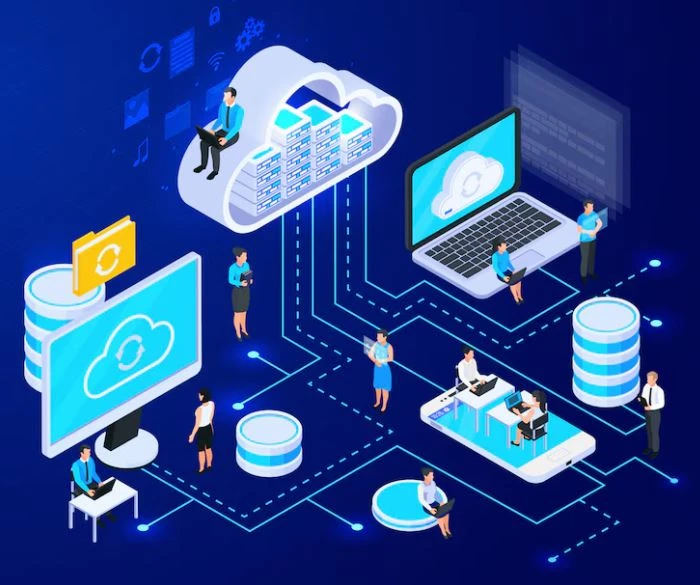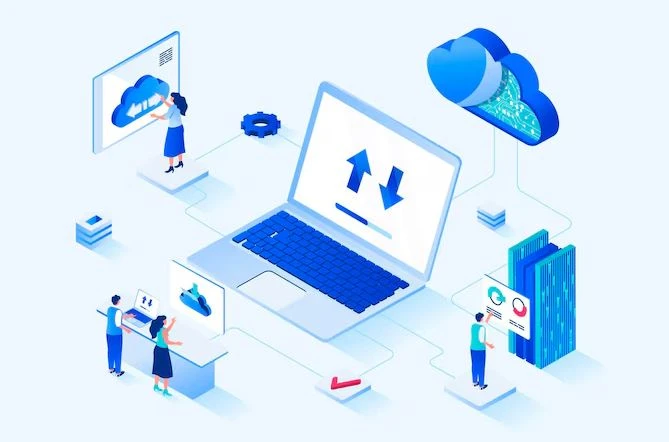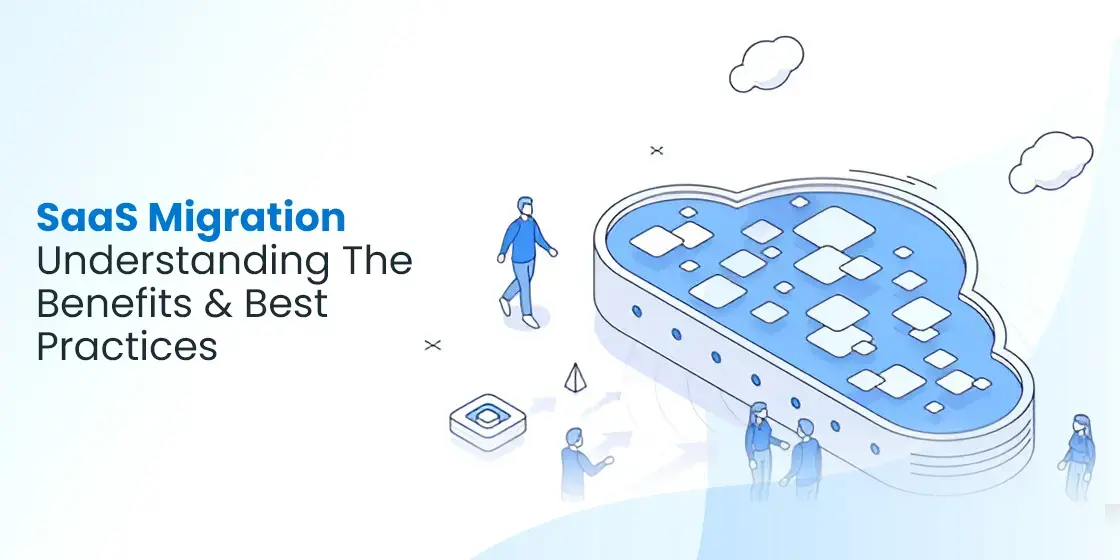Table of Content
Learn How to Create a Roadmap for SaaS Migration Below
Migrating your application towards SaaS spectrum is not that easy as it looks. There are specific things you need to look at before finalizing any plan towards SaaS migration. A lot of times, project stakeholders do not look into these factors, which is why they later on create hurdles in the migration. This ignorance can be attributed to lack of market knowledge, or understanding of the technicals involved in SaaS migration. Either way, it is important for project administrators to understand how SaaS migration works and what type of prerequisites are needed for it.
The process of SaaS migration can also vary according to the nature of applications. Though every user-centric application that offers some sort of online service is SaaS, but their method of delivery often differs from one another. Understanding this part is critical, as it could form a method to look into SaaS migration separately. If you don’t know how it works and what type of resources are required in it, read this blog in detail.
In this blog, we will give a brief explanation about SaaS migration, so that you can understand how a simple application can be elevated to the SaaS spectrum. Let’s start from the basics understanding what is SaaS migration and how it can help software development services in building better products.
What is SaaS Migration?

SaaS migration refers to the process of moving an organization’s software applications from on-premises systems to a Software as a Service (SaaS) model. In a SaaS model, software is hosted in the cloud and accessed through the internet, typically on a subscription basis. The goal of SaaS migration is to leverage the benefits of cloud computing by transitioning from traditional software deployment methods to a more flexible, cloud-based approach.
This migration often involves several key steps, including assessing current systems, selecting appropriate SaaS providers, planning data transfer, and reconfiguring workflows and integrations. It may also require reengineering legacy applications to be compatible with the new environment. Throughout the process, organizations must address challenges like security in SaaS, compliance, user training, and potential downtime to ensure a smooth transition and minimal disruption to business operations.
Once the migration is complete, organizations typically experience streamlined IT management, reduced infrastructure costs, and improved collaboration across teams. SaaS platforms also offer automatic updates and support, which help keep systems current without the need for manual intervention. Overall, SaaS migration enables businesses to be more agile and responsive to market changes, making it a strategic move in today’s fast-paced digital landscape.
How to Plan SaaS Migration

Planning a SaaS migration isn’t easy because it needs a clear understanding of the whole project scope. By going through a step by step process, migration can be eased and platforms could be converted to a full-scale SaaS application. Let’s see how it works below.
Conduct Research
SaaS migration is a multifaceted and often intricate undertaking that involves more than just transferring data and applications to the cloud. One of the most critical preliminary steps in this process is conducting comprehensive market research. This research involves evaluating various SaaS vendors to determine which solutions best align with the organization’s functional requirements, business goals, and budget constraints.
Thorough market research helps decision-makers anticipate potential risks, and identify any hidden costs or limitations associated with different SaaS offerings. It also enables organizations to compare features, integration capabilities, customer support, and compliance with industry regulations. By investing time in this research, businesses can make more informed choices, and lay a solid foundation for a successful transition to a cloud-based software model.
Fuel innovation by leveraging bespoke software solutions. Get in touch with our team of experts to build cutting-edge software products.
Get a QuoteChart Out Goals
Once you have thoroughly evaluated your existing application infrastructure and completed detailed market research on available SaaS software, the next essential step is to define clear and strategic goals for your SaaS migration initiative. This goal-setting phase serves as a roadmap for the entire migration process, helping to align the technical execution with broader business objectives.
In addition to overarching business goals, it is important to establish specific, measurable targets that will guide the implementation and track progress. These may include timelines for each phase of the migration, user adoption benchmarks, and compliance milestones. By setting detailed and realistic objectives at this stage, organizations can ensure that all stakeholders have a shared understanding of the migration objectives.
Create Migration Strategies
SaaS migration involves a range of potential risks that can impact both the technical and operational aspects of an organization. Additionally, regulatory compliance issues and vendor lock-in can pose significant concerns if not proactively considered. Identifying these risks early in the planning phase is critical to minimizing their impact and ensuring a smooth transition to a cloud-based environment.
To effectively manage these risks, organizations must develop comprehensive mitigation strategies tailored to their specific needs and infrastructure. This includes creating detailed migration plans with clear timelines, and establishing robust data backup and recovery procedures. By implementing well-structured strategies, businesses can streamline the migration process, and increase the chances of a successful SaaS adoption.
Finalize Migration Roadmap
Once effective strategies for managing the SaaS migration have been established, the next step is to create a comprehensive and detailed roadmap. This roadmap should serve as a structured plan, clearly outlining all necessary tasks and activities required to complete the migration. It should break the process into well-defined phases, such as preparation, and post-migration support.
In addition to task scheduling, the roadmap should include key milestones and checkpoints that allow progress to be monitored. Ensuring that every action taken supports these goals allows the migration to deliver its intended value while minimizing disruption to business operations.
Benefits of SaaS Migration
SaaS migration offers numerous benefits that can significantly enhance an organization’s efficiency. One of the most immediate advantages is cost reduction. By moving from on-premises infrastructure to a SaaS model, businesses can eliminate expenses related to hardware maintenance. SaaS applications typically operate on a subscription basis, which provides predictable costs and reduces the need for large upfront capital investments.
Another key benefit of SaaS migration is improved scalability and accessibility. SaaS solutions are cloud-based, which allows users to access applications from anywhere with an internet connection. These platforms are also highly scalable, meaning organizations can easily adjust their usage and services as their needs evolve, without major overhauls or disruptions. Furthermore, SaaS providers often offer robust security measures, helping businesses maintain high standards of data protection while meeting regulatory requirements.
Frequently Asked Questions
| What is SaaS migration? SaaS migration is the process of moving applications, data, and workflows from on-premises systems to cloud-based platforms. It aims to improve scalability, reduce costs, and enhance accessibility through cloud technology. |
| Why SaaS technology is becoming popular? SaaS technology is becoming popular due to its cost-efficiency, and ability to provide remote access to the users. It also offers automatic updates and maintenance, reducing the burden on internal IT teams. |
| Which SaaS applications are popular in the world? Popular SaaS applications worldwide include Microsoft 365, Salesforce, Zoom, and Slack. These tools are widely used for communication, collaboration, customer relationship management, and productivity. |
Final Words
That concludes our entire article in which we have discussed the complete concept of SaaS migration in detail. Understanding this whole process is important because migrating applications towards SaaS technology is steadily becoming need of the hour. There are many successful stories available out there that defines how strong and reliable SaaS model is. Being a project stakeholder, it is therefor important for you to understand how the migration works and what steps are needed for it. This blog has taken a quick overview of the whole process, so make sure to read it completely to master the step-by-step migration model.
Empower your digital initiatives with BariTechSol, a premier custom software development company. Our skilled team tailors cutting-edge solutions to your unique needs. Elevate your tech experience and stay ahead in the digital realm. Partner with BaritechSol and code the success of your next big idea.


